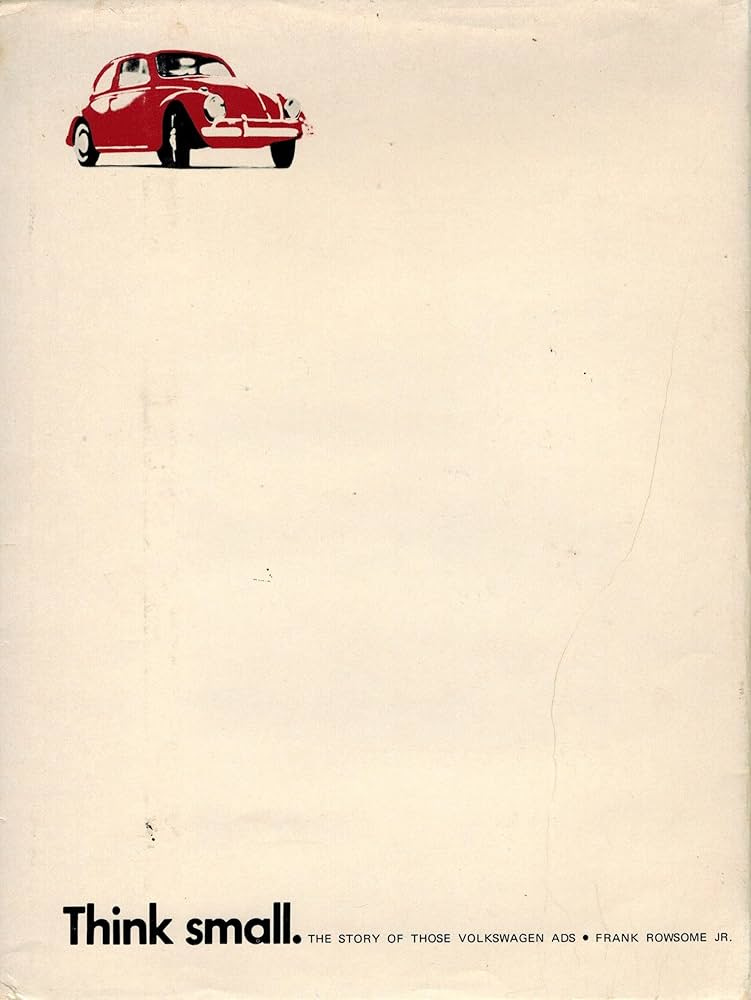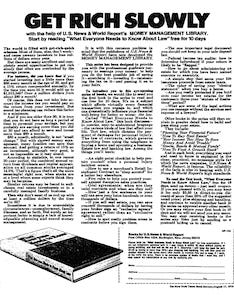The Contrarian Headline Trick
How to grab attention by saying the opposite of what everyone else expects
Back in the 1960s, when car ads were all chrome and confidence, everyone shouted the same thing: Bigger is better.
Then Volkswagen did something strange.
They ran an ad that was mostly white space, with a tiny image of their small, funny-looking Beetle. The headline said: Think Small.
That was it.
No exclamation marks.
No grand promises.
Just a quiet, almost awkward phrase that went against everything the market believed.
It worked. It stopped people mid-page, and it changed how ads were written.
Invest in Gold → Beware of Gold
A few weeks ago, I stumbled upon a tweet from Andrew Gould, one of my favorite copywriting voices on X/Twitter.
He said something that stuck with me:
“For headline ideas, think about the opposite of what everyone else is saying.”
Example: Invest in Gold → Beware of Gold.
It’s deceptively simple, yet powerful.
When a headline flips the common belief, curiosity ignites. Readers pause because their brain wants to resolve the tension.
They think, Wait, that can’t be right… and that’s exactly where your message has their full attention.
Get Rich Slowly
It also reminded me of another timeless example from Gary Bencivenga, one of the most respected copywriters of the last century. His famous headline, “Get Rich Slowly”, broke every convention of financial advertising.
And that single reversal made the message believable. It created instant trust because it challenged the reader’s expectation without insulting their intelligence.
That’s the deeper beauty of saying the opposite. It doesn’t just grab attention; it earns it.
Here’s what that flip looks like in practice:
1. Finance
Before: “Save Money to Get Rich”
After: “Why Saving Money Keeps You Poor”
2. Health
Before: “Exercise Every Day for Better Health”
After: “Why Daily Workouts Could Be Ruining Your Body”
3. Business
Before: “Follow the Market Trends to Succeed”
After: “The Hidden Danger of Chasing Market Trends”
Notice how each “after” headline makes you lean in. It doesn’t shout louder, it asks better questions.
That’s the whole trick: tension before explanation.
Of course, there’s a fine line.
If you flip a truth just for shock value, it feels manipulative. But if the opposite is rooted in insight, if you can back it up, it becomes magnetic.
Don’t be controversial for the sake of it. It’s about showing what others overlook.
So here’s a quick challenge for you.
Take one headline from your recent work and write the opposite version. You’ll be surprised how often a better idea appears on the other side.
I’m experimenting with this myself too, and it’s already changing how I look at headlines. Maybe it’ll spark something fresh for you as well.
And if you do try it, share your before-and-after headlines in the comments or just reply to this email. I’d love to see what you come up with. I might even feature a few creative flips in the next issue.




